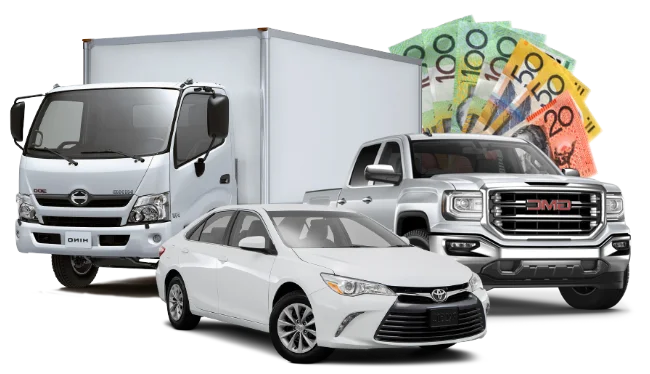Cars are made for movement. But every vehicle reaches the point where it stops serving its purpose. When that day arrives, many owners are unsure what happens next. Some leave their old cars sitting in driveways or paddocks. Others pass them off to scrap yards. What many do not realise is that salvaging vehicles is not just about metal and parts — it is part of a bigger environmental story.
This article explains the science behind salvaging vehicles, how it helps the planet, and why it plays a larger role in waste management and sustainability.https://getcashforcarz.com.au/
1. Understanding What Makes Up a Car
A car is not just metal on wheels. It is built from many materials, including:
-
Steel and iron: Used in the body and engine
-
Aluminium: Found in wheels, engine parts, and frames
-
Copper: Found in electrical wiring and motors
-
Glass: Used in windows and windscreens
-
Plastics and rubber: Found in dashboards, tyres, and bumpers
-
Toxic fluids: Engine oil, brake fluid, petrol, and coolant
Each part, if not managed correctly at the end of a car’s life, can affect the land, water, and air around it.
2. How Salvaging Cars Reduces Waste
A key part of recycling vehicles is reducing how much material ends up in landfill. When a car is left to rot, plastics break down into the soil, fluids leak into waterways, and rusted metal takes up space.
Salvaging a vehicle means those parts are separated, sorted, and either reused or recycled. Metal is melted and reshaped. Tyres can be used in roadworks or playground surfaces. Even used motor oil can be cleaned and used again.
By choosing to salvage, each vehicle owner keeps many kilograms of waste out of landfill. On average, over 75% of a car’s materials can be reused or reprocessed.
3. The Impact on Carbon Emissions
Creating new steel from raw iron ore takes much more energy than using recycled steel. According to data from environmental agencies, recycling steel from salvaged vehicles can cut energy use by more than 70%. That also means lower greenhouse gas emissions.
When old car parts are reused or repaired, fewer new parts are needed. This reduces demand for manufacturing, which often includes mining, shipping, and large-scale factory work. Every reused part, from an engine block to a tyre, removes steps from the supply chain that would otherwise add to the carbon footprint.
4. The Importance of Safe Fluid Removal
Old vehicles often hold harmful fluids, even when they have been off the road for years. These include:
-
Engine oil
-
Coolant
-
Brake and transmission fluids
-
Fuel or diesel
-
Battery acid
If these leak into the ground, they can damage ecosystems and seep into groundwater. Animals and plants can be harmed, and it can take years for the land to recover.
Salvage yards must follow strict handling rules to drain and dispose of these liquids properly. Some fluids can be filtered and reused, while others go through chemical treatment before disposal.
5. How Materials Are Recycled
Once fluids are drained and reusable parts are taken out, the rest of the car is crushed and sent for sorting. A strong magnet pulls out steel. Other machines separate aluminium, copper, and plastics.
Each material has a use:
-
Steel goes back into car manufacturing or construction.
-
Aluminium is used in furniture, planes, and drink cans.
-
Copper returns to electrical goods and wiring.
-
Plastics are reshaped into containers or used in building materials.
-
Glass is melted and used for insulation or new bottles.
This process helps lower the need to dig up raw materials. It also saves energy and reduces emissions.
6. Salvaging Supports Cleaner Cities
Old cars are not just bad for the environment — they can also harm communities. When left in driveways, carparks, or on the side of the road, they become eyesores. They may leak fluids, attract pests, or block space.
Salvaging removes these risks. It also creates jobs in the recycling sector and helps local councils reduce dumped car issues.
In cities like Brisbane, where more people are looking for better ways to manage waste, services that help with car removal are part of a larger environmental effort.
7. One Small Decision That Adds Up
Choosing what to do with an old car might feel like a personal choice. But in truth, it connects to larger issues. Waste, pollution, energy use, and climate change all link to how materials are handled.
One way people are acting is through services that focus on reuse and removal. For those looking to Sell My Car Brisbane, using a local car removal service not only clears space — it ensures that each part of the vehicle is processed with care. This step also supports local workers and prevents more waste from entering landfill.
8. A Service That Connects Responsibility with Action
When it comes time to part with an old vehicle, finding a service that supports proper handling makes a difference. Get Cash for Carz offers a way to clear unwanted vehicles while making sure each part is managed the right way. Fluids are drained properly, materials are sorted, and anything reusable is sent on for another purpose. This kind of service helps turn car removal into a practical step toward environmental care, without adding more problems to local land or waterways.
Conclusion
Salvaging vehicles is not just about making space or earning some money — it is also about science, waste reduction, and long-term thinking. Cars hold both useful materials and harmful substances. How these are handled after the car’s life ends shapes the impact on land, water, and air.
By choosing to salvage, owners help reduce landfill, support material reuse, and lower carbon emissions. One vehicle at a time, these actions add up.
When more people understand the science behind it, letting go of a car becomes more than just a clean-up — it becomes a smart step for the environment.



